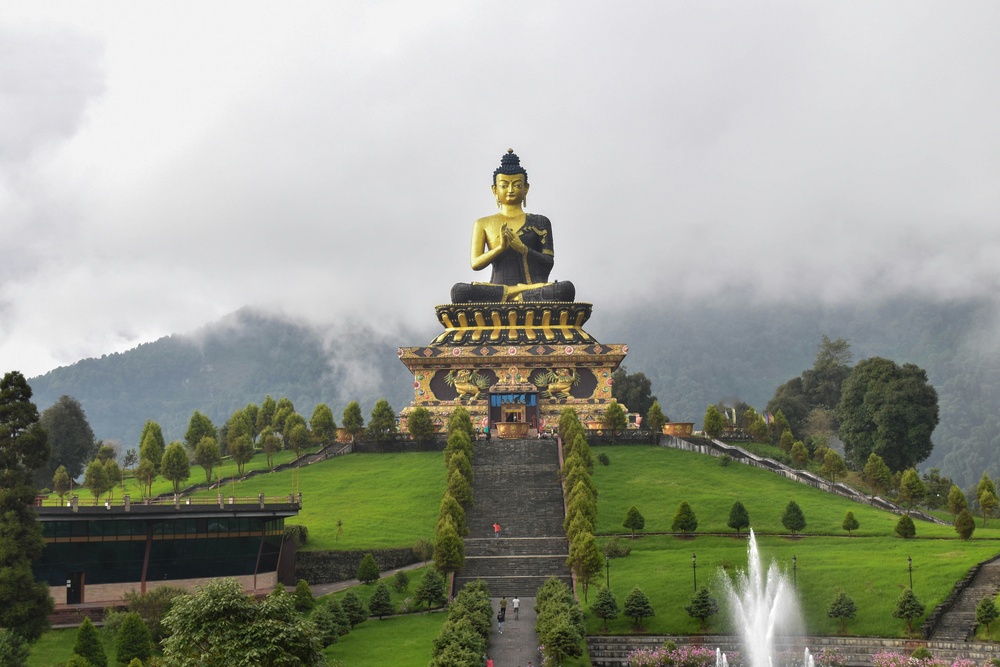The Indian state of Sikkim, nestled in the Eastern Himalayas, is a hotspot of biodiversity, culture, and sustainability. While the snow-capped peaks and Buddhist monasteries attract spiritual and scenic travelers, the popular wildlife sanctuaries in Sikkim have emerged as a paradise for eco-tourists and adventure seekers. These protected reserves, blessed with rare flora and fauna, rugged terrains, and lush forests, not only protect endangered species but also offer thrilling trekking trails, immersive nature experiences, and opportunities for responsible tourism.
If you’re passionate about preserving nature, exploring offbeat destinations, and indulging in soul-refreshing outdoor activities, here’s why these sanctuaries in Sikkim are ideal for your next eco-adventure journey.
1. Untouched Biodiversity in Its Purest Form
The popular wildlife sanctuaries in Sikkim like Fambong Lho, Maenam, Barsey Rhododendron Sanctuary, and Pangolakha are home to an incredible variety of ecosystems—from alpine meadows to dense temperate forests. These sanctuaries protect endangered species such as the red panda, Himalayan black bear, musk deer, satyr tragopan, and numerous orchids and medicinal plants.
Eco-tourists have the rare chance to observe these species in their natural habitats, far removed from the hustle of commercial tourism. Unlike overcrowded reserves elsewhere, Sikkim’s sanctuaries offer raw, untouched beauty with minimal human interference, making them ideal for mindful nature observation.
2. Trekking Trails That Connect You to Nature
Sikkim’s sanctuaries are not just havens for biodiversity—they also double as scenic adventure routes. Whether you’re trekking from Hilley to Barsey through blooming rhododendrons, hiking to Maenam Peak with sweeping views of Kanchenjunga, or exploring the forest trails of Fambong Lho, these sanctuaries blend adrenaline with tranquility.
These trails are suitable for various fitness levels, and they give travelers a chance to explore eco-zones, learn about native flora, and enjoy panoramic views. Treks often end at monasteries, glacial lakes, or remote ridgelines—creating a perfect mix of spirituality and adventure.
3. Community-Based Eco-Tourism
Most of the popular wildlife sanctuaries in Sikkim are surrounded by small villages that play a critical role in conservation. Local communities often run eco-stays, guide services, and traditional homestays that introduce visitors to sustainable living practices, organic farming, and local cuisines.
By staying in these eco-villages and using local services, travelers actively contribute to community development and wildlife preservation. For instance, the villages around Pangolakha Sanctuary, such as Zuluk and Padamchen, offer traditional Lepcha hospitality and guided eco-walks, giving tourists both comfort and conscience.
4. Birdwatcher’s Paradise
For birding enthusiasts, Sikkim’s sanctuaries are a dream destination. Species like the blood pheasant, Himalayan monal, rufous-necked hornbill, and fire-tailed sunbird can be spotted with patience and the help of local bird guides. Sanctuaries like Kyongnosla Alpine Sanctuary and Fambong Lho are especially rich in avifauna.
Birdwatching is one of the most sustainable forms of tourism—it requires minimal impact and maximum appreciation of the environment. The sanctuaries offer designated birding zones and observation huts, encouraging responsible nature observation.
5. Seasonal Diversity and Visual Spectacles
Each season brings a different face of these sanctuaries. Spring brings vibrant rhododendron blooms in Barsey, summer reveals the green carpeted trails of Maenam, and autumn and winter turn Kyongnosla and Pangolakha into snow-laced wonderlands. For eco-tourists, this means year-round opportunities to engage with different aspects of nature—from wildflower photography to snow trekking.
Adventure tourism thrives here not through artificial setups but through nature’s changing canvas—perfect for travelers who love unpredictability and natural beauty.
6. Accessibility Meets Adventure
While remote, many sanctuaries are accessible via motorable roads followed by short treks. For example:
- Fambong Lho is just 25 km from Gangtok.
- Barsey can be accessed via Hilley, a short drive from Sombaria.
- Maenam is easily reachable from Ravangla.
This accessibility makes them ideal for short eco-adventure getaways or part of longer, multi-day nature tours. The treks are well-marked, guides are available locally, and basic accommodations are present—balancing remoteness with comfort.
7. Opportunities for Citizen Science and Conservation Volunteering
Several sanctuaries in Sikkim invite participation in conservation programs. From orchid documentation projects to red panda monitoring, eco-conscious travelers can now contribute to real-time biodiversity conservation. NGOs and forest departments occasionally run programs for wildlife tracking, reforestation, and climate observation—turning your trip into a meaningful impact journey.
Tips for a Responsible Visit
- Pack light and eco-friendly: Avoid plastic, carry reusable bottles, and use biodegradable toiletries.
- Respect local culture and wildlife: Maintain silence, follow guide instructions, and avoid disturbing animals.
- Stay in eco-stays or homestays: Help generate income for local communities who protect the forests.
- Avoid off-trail hiking: Stick to designated paths to avoid damaging fragile ecosystems.
- Travel off-season smartly: Choose times when footfall is low to minimize environmental impact.
Final Thoughts
The popular wildlife sanctuaries in Sikkim are more than just protected zones—they are living classrooms, silent meditative spaces, and adventure playgrounds all at once. For travelers who wish to blend eco-awareness with adventure, these sanctuaries offer a one-of-a-kind experience that touches the soul and leaves a lasting impact on the environment and local communities.
As the world moves toward responsible tourism, Sikkim stands as a shining example. By choosing to explore its sanctuaries with mindfulness and curiosity, you become a part of a greater movement that celebrates the Earth while preserving it for future generations.
So, lace up your trekking boots, pack your binoculars, and get ready to experience Sikkim’s wild heart—one sanctuary at a time.




